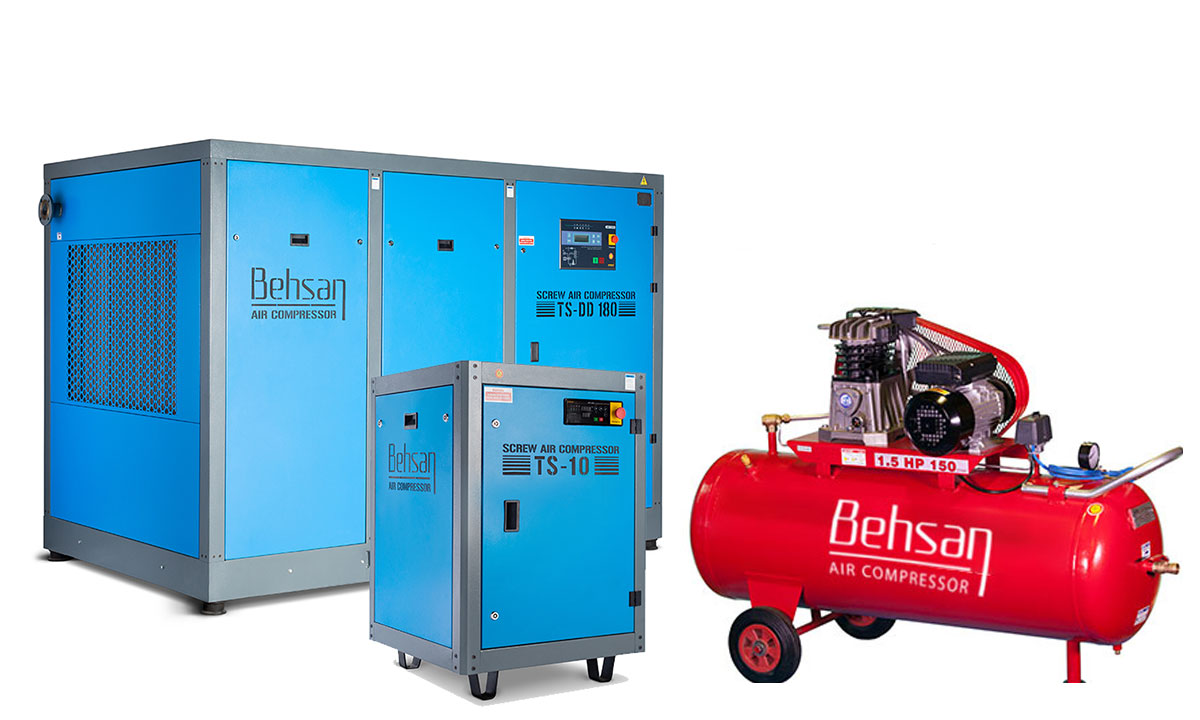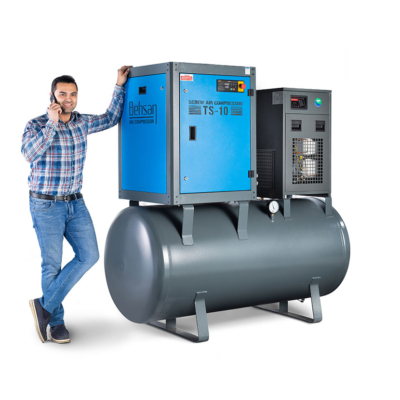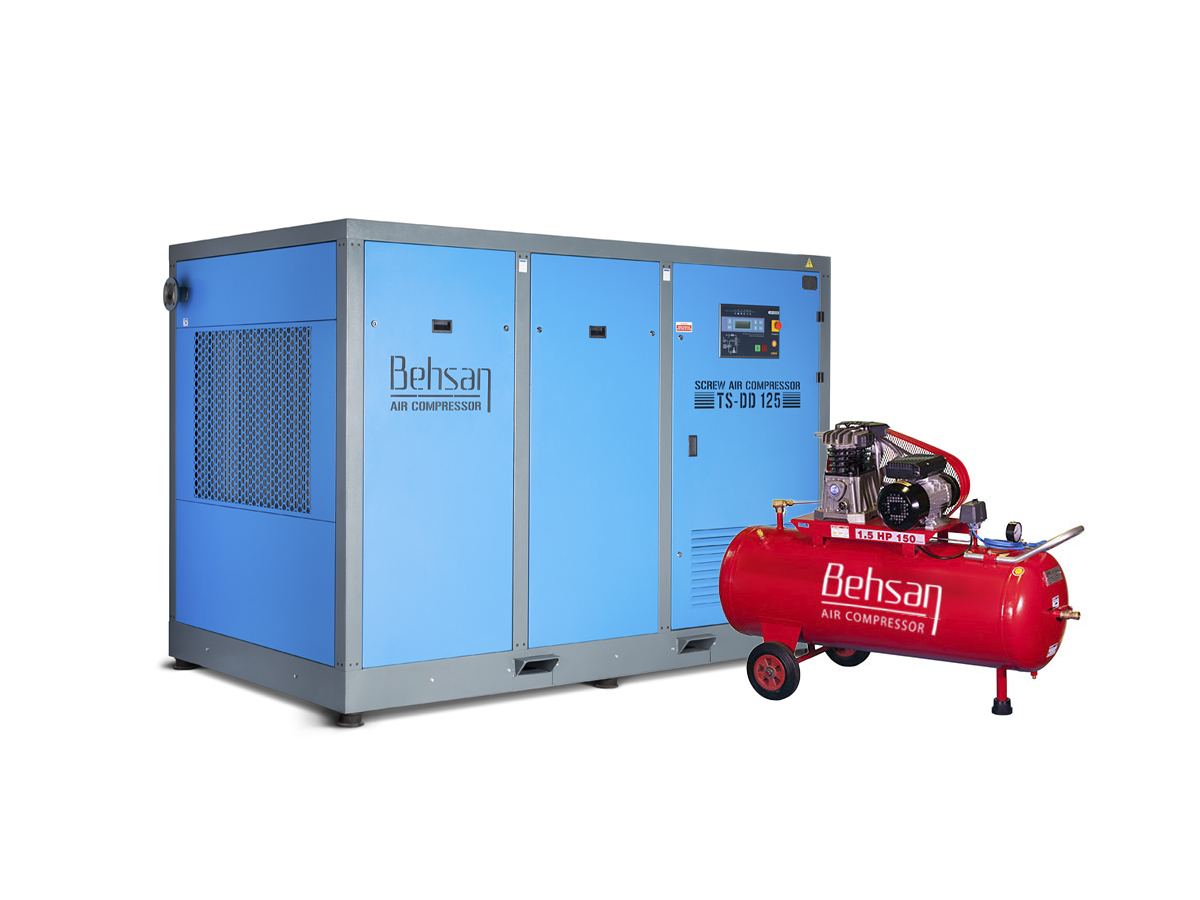How to Choose the Right Air Compressor for Your Needs
How to Choose Air Compressor
After your calculations, you can determine how big of an air compressor you need. To choose among the various air compressor sizes, make these considerations:
1. Air Pressure
Understanding your maximum required operating pressure helps you select a compressor size. You’ll typically find air compressors rated between 100 PSI to 175 PSI. The highest PSI requirement for your tools or machinery will determine what you’ll select for your air compressor.

2. CFM Requirements
The larger your application, the higher CFM you’ll need. By considering all the tools you use at once and increasing their total CFM ratings by 30%, you’ll have a buffer that can accommodate factors such as leaks or added tools. Whenever you run more than one air tool or piece of machinery at once, you’ll want to ensure the total CFM requirements do not exceed what your compressor can provide.
With your calculated CFM noted, you can compare your air compressor options using standard cubic feet per minute (SCFM). SCFM is the airflow converted to a standard that assumes these conditions:
36% humidity at sea level
68 degrees Fahrenheit
14.5 pounds per square inch absolute (PSIA)
Note that the compressor’s CFM rating will be lower than the SCFM calculation. CFM values are measured when the air supply is pressurized — typically at 90 PSI.
3. Horsepower
While larger horsepower (HP) does not always equate to a more powerful compressor, it is a factor worth considering. A higher HP often means the air compressor can power heavy workloads. Air compressors typically range between 1.5 HP and 6.5 HP.
4. Air Capacity and Tank Size
Physical size matters most when it comes to your compressor’s tank size. As an industrial operation, your facility will likely require a large tank size. Compressors that have larger tanks and suitable motors provide higher levels of air pressure for sustained periods. Larger tanks require fewer duty cycles, meaning your teams can continue working with little downtime. Because your facility will likely need a larger air compressor tank, keep your space limitations in mind.

5. Duty Cycle
Duty cycles describe a compressor’s on-off cycle. Off-time is a momentary drop in pressure when the compressor is recharging. For applications that require bursts of air, off-time is acceptable. Uses that require a constant air pressure, such as painting vehicle parts, need a steady flow and a smaller duty cycle.
For uses that need constant air pressure and industrial applications, a 100% duty cycle is often necessary. These air compressors can work continuously and are often equipped with engine-cooling features to maintain efficient and safe operations.
You may also see the duty cycle described in active-idle time. A 70/30 duty cycle means the compressor is active for 70% of the time it’s powered on.
6. Compressor Style
Other than size or air pressure and supply values, you’ll have various compressor designs to choose from:
Oil-free compressors: Choose oil-free air compressors if you require a contaminant-free yet steady power supply.
Centrifugal compressors: This dynamic air compressor option turns kinetic energy into high air pressure and is suitable for clean environments.
Rotary screw compressors: Rotary screw compressors are cost-effective and have little maintenance needs, and they’re beneficial for 24/7 operations and continuous air needs.
Reciprocating compressors: Facilities of all sizes can use reciprocating air compressors, and these units can supply more pressure than other models.
Rotary vane compressors: With their compact design, rotary vane compressors are suitable for smaller spaces with low capacity needs.
Pressure-lubricated compressors: A pressure-lubricated air compressor provides long-term operation for industries such as aerospace and automotive.
Browse our air compressors in Behsan Compressor or contact us online for assistance in choosing the right compressor size.
Article reference: https://fluidairedynamics.com/blogs/articles/what-size-air-compressor-do-you-need


Leave a Reply
Want to join the discussion?Feel free to contribute!